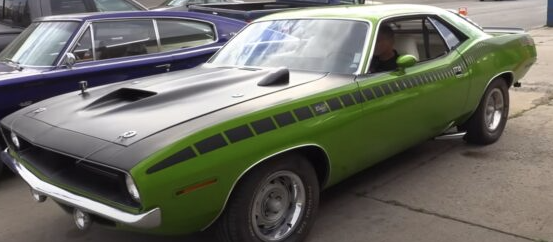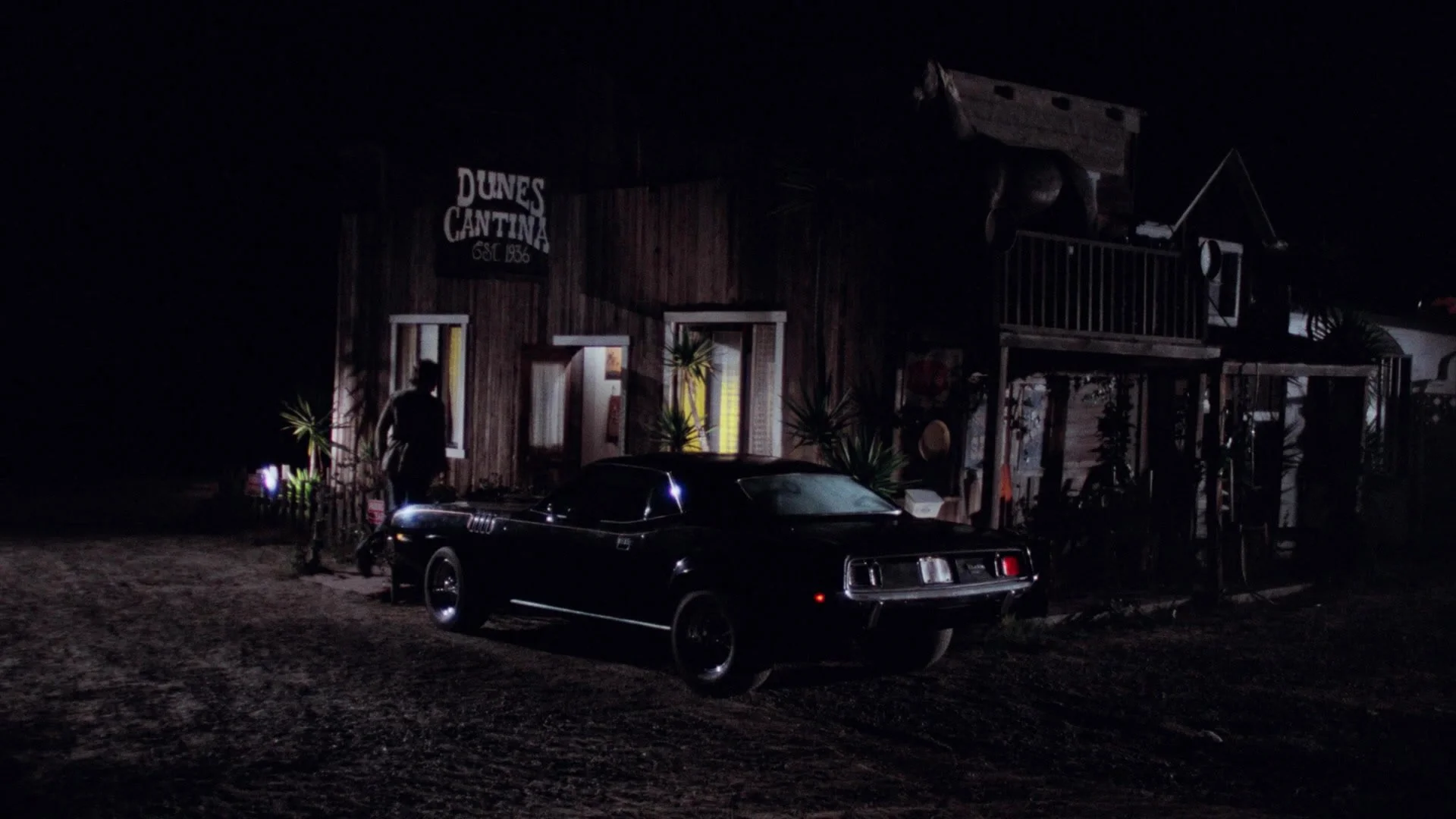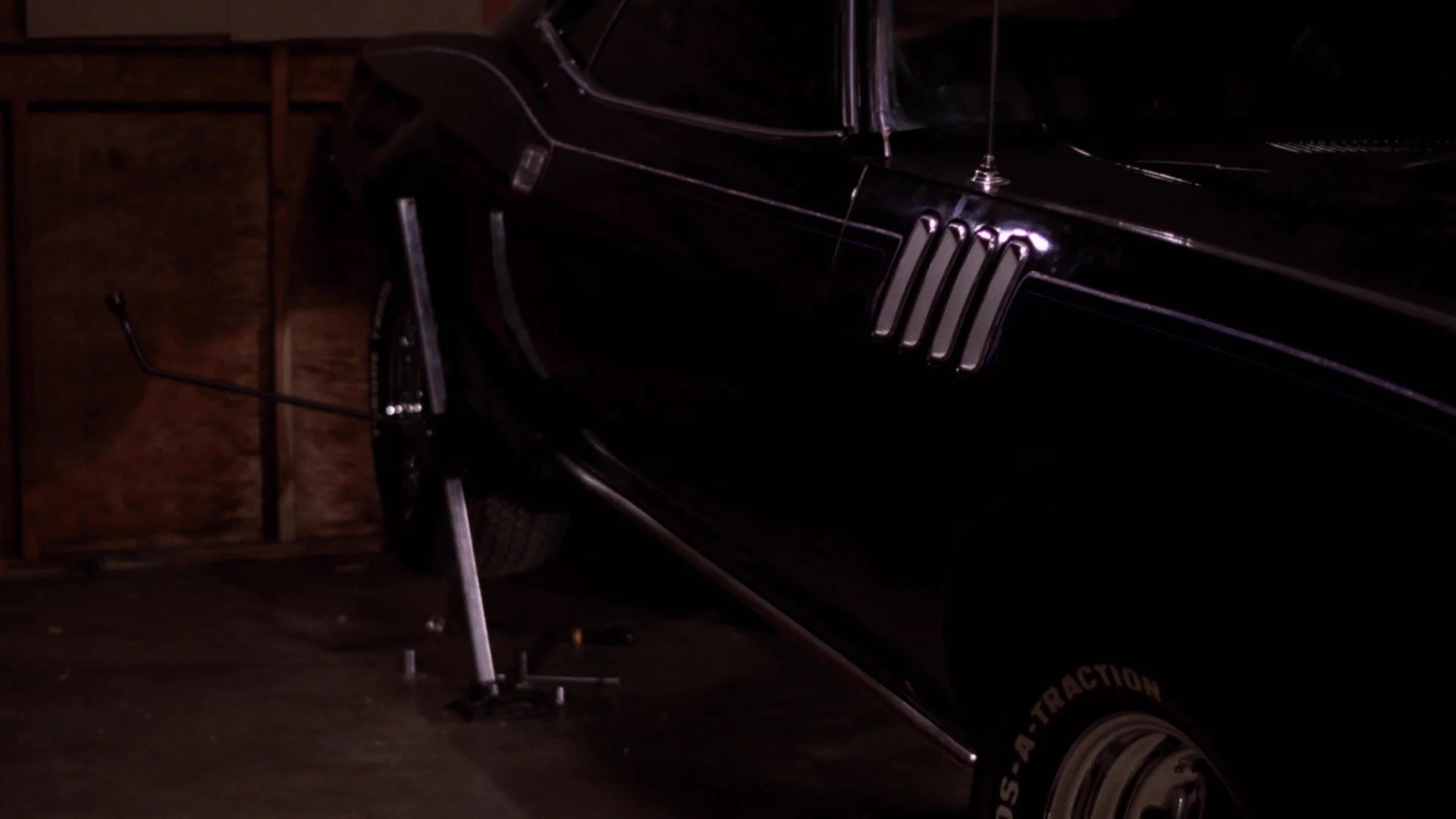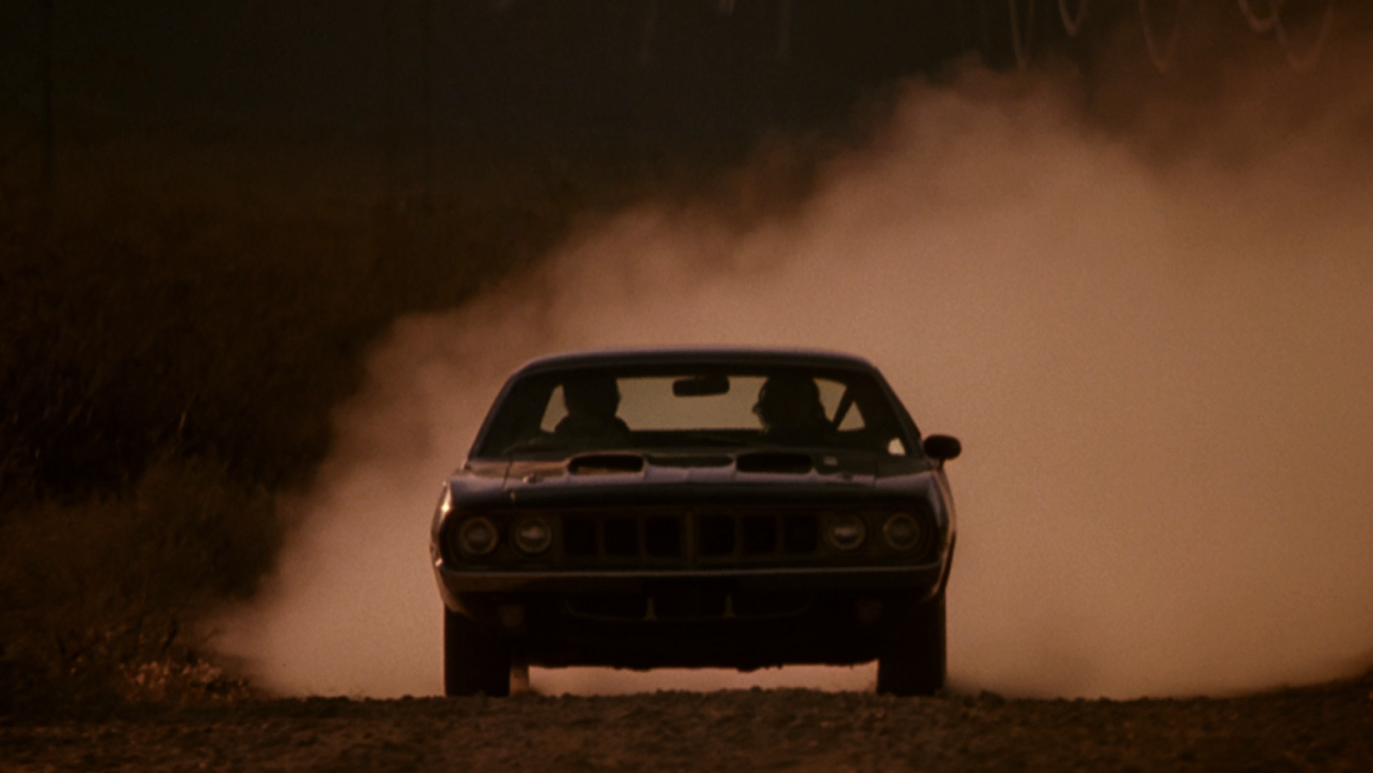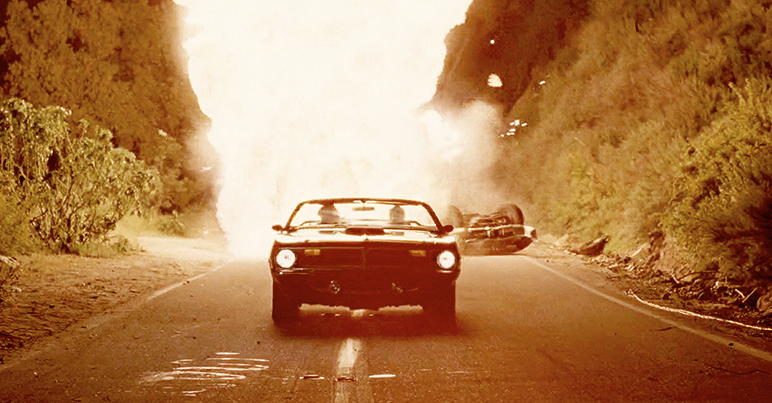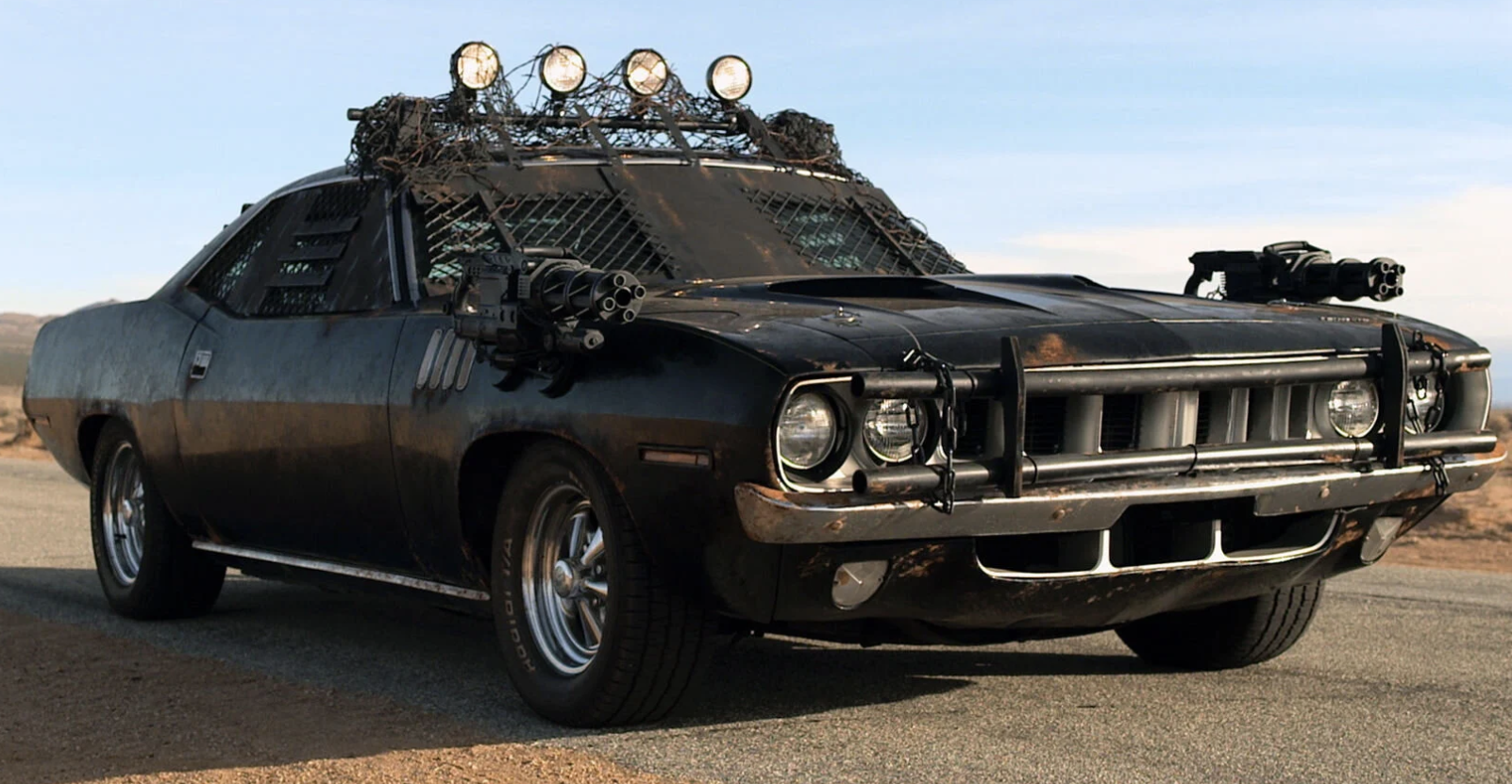The Complete History of the Phantasm 'Cuda
When horror meets horsepower, something magical happens. For over four decades, the black Plymouth 'Cuda from the Phantasm franchise has become as iconic as the films' terrifying flying spheres and the menacing Tall Man himself. This is the complete story of how a humble muscle car became a legend.
High School Dreams Become Cinema Reality
The genesis of the Phantasm 'Cuda traces back to writer-director Don Coscarelli's high school days in the early 1970s. A fellow student drove a stunning Sassy Grass Green 1970 Plymouth AAR 'Cuda with a white interior and pistol-grip shifter through the school parking lot, leaving Coscarelli and his friends mesmerized.
Years later, while crafting the screenplay for Phantasm in a secluded mountain cabin, that memory resurfaced and Coscarelli decided his protagonists would drive a 'Cuda, giving him a chance to finally get behind the wheel of one.
The Original Dream Machine
For the 1979 original film, production found a well-worn 1971 Plymouth 'Cuda that had originally left the factory painted in FC7 In-Violet purple with a white interior. The car was powered by a 340 cubic-inch V8 with a customized Carter Thermoquad carburetor and backed by an A-833 four-speed manual transmission with a Hurst Pistol-Grip shifter.
To give the car its sinister appearance for the horror film, it was repainted in X9 Formal Black with subtle blue and gray pinstripes applied to its flanks. The production added Cragar SS chrome wheels wrapped in fat rubber, installed leaded rear fender flares to accommodate the wider tires, and fitted a black tinted sunroof to facilitate a scene where the hero would pop through the roof with a shotgun.
The car wore 440 Six-Pack hood callouts despite housing the smaller 340, creating an illusion of even more menace under the hood. This bit of "upbadging" added to the car's intimidating presence on screen.
On-Set Troubles and the Original Car's Fate
Behind the scenes, the 'Cuda was far less reliable than its commanding screen presence suggested. The car's electrical system was nearly shot, causing constant breakdowns and headaches for the crew. Despite its starring role, the nine-year-old vehicle ran terribly and required constant attention from the production team.
The original Phantasm 'Cuda then vanished from history. The last confirmed sighting of the original car came in the early 1980s when automotive enthusiast Juan Marchant discovered it in the background of a CHiPs television episode, sitting on a used car lot. Read our full account of the mysterious PHANTASM 1 ‘Cuda here.
Phantasm II (1988): Multiple 'Cudas for More Mayhem
Nearly a decade later, for the 1988 sequel, locating affordable 1971 'Cudas proved far more difficult as the muscle car collecting craze was in full swing. The production used four different Barracudas modified to resemble 'Cudas, with Hemicuda emblems added to the hoods for additional street credibility.
Two of these cars were so decrepit they were selected specifically for the dramatic crash scene at the film's conclusion. One was restored for most driving scenes, while another received a nice cosmetic restoration for close-up work. Unlike the original, these cars were kept fairly stock in appearance, without the flared wheel wells and sunroof of the first film's car.
The beautiful close-up car survived the production and became part of Don Coscarelli's personal collection, where he still owns it today, powered by its smooth-running 318 V8. Fans were lucky enough to ride in it at the release of Don Coscarelli’s book PHICTION: Tales From The World of PHANTASM!
Phantasm III (1993): The Ultimate Dream Car
For Phantasm III: Lord of the Dead, Coscarelli aimed for perfection. He decided to give his characters the ultimate 'Cuda: a 1970 Hemicuda convertible, one of the rarest muscle cars from the entire Golden Era, with only 14 examples produced in 1970.
Real 1970 Hemicuda convertibles were extraordinarily rare and valuable even in the early 1990s. Of the roughly 65,000 Barracudas produced in 1970 and 1971, only 780 were Hemicudas, and just 21 of those were convertibles. The 426 Hemi added $871 to the purchase price in 1970, making them prohibitively expensive when new.
Since using an authentic numbers-matching car would have consumed an enormous chunk of the movie's budget, the production located a clone project with a 426 Hemi engine already installed. Expert West Coast Mopar restorer Greg Buhlinger was enlisted to transform it into the screen star.
The production partnered with Kevin King of Year One, Inc. to provide correct restoration parts. The result was a stunning triple-black 1970 Hemicuda convertible featuring:
Dual four-barrel Carter carburetors on the 426 Hemi
Argent Silver Shaker hood scoop
Factory driving lights and chrome bumpers
15-inch factory Rallye wheels
White "Hockey Stick" stripes with Hemi callouts
"Go Wing" rear deck spoiler
Wood rim steering wheel
Hurst pistol-grip shifter atop the four-speed A-833 transmission
Phantasm IV: Oblivion (1998) and The Legacy Continues
The stunning 1970 triple-black Hemicuda convertible from Phantasm III returned for Phantasm IV: Oblivion, continuing its role as Reggie's trusty steed in the ongoing battle against the Tall Man.
Phantasm: Ravager (2016): The Battle Cuda
For the fifth and final installment, Phantasm: Ravager, the Phantasm II "Evil" 1971 Cuda Hardtop made an appearance before being transformed into a ground-pounding "Battle Cuda" battle wagon, featuring heavily modified bodywork suitable for the film's post-apocalyptic setting. The film marked Angus Scrimm's final performance as the Tall Man and brought the entire original cast together one last time for an epic, multi-dimensional finale.
The battle ‘Cuda was designed by talented artist Kathleen Hartman (wife of RAVAGER director David Hartman!)
The Reality Behind the Dream
Today, genuine 1970-1971 Hemicuda convertibles have become some of the most expensive American cars ever sold at auction. A 1971 example sold for a record-breaking $3.5 million at a 2014 Mecum auction in Seattle, making it the highest sale price ever recorded for a factory muscle car and solidifying Mopars as the kings of collectible muscle cars. Other examples have sold for between $1.98 million and $2.675 million in recent years.
The astronomical values stem from the combination of double-digit production numbers, the legendary 426 Hemi engine, and the cars' status as "accidental million-dollar collectibles." When new, performance enthusiasts actually preferred the coupes, as convertibles were heavier and had weaker unibody structures that shook over bumps. The very characteristics that made them less desirable in the 1970s now make them priceless.
More Than Metal and Movies
The Phantasm 'Cuda represents something greater than the sum of its parts. It's a symbol of brotherhood, rebellion, and the enduring appeal of American muscle. From Don Coscarelli's high school daydreams to its transformation into one of cinema's most iconic vehicles, the black 'Cuda has left tire marks on popular culture that will never fade.


